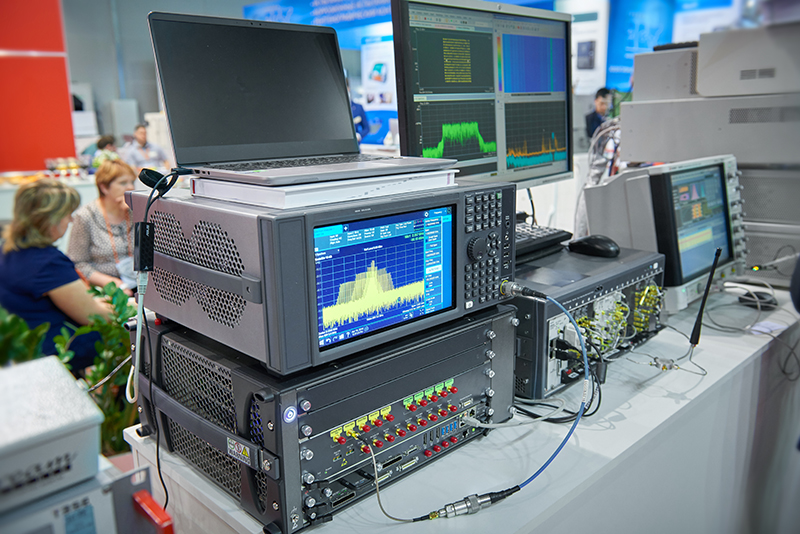Strict electromagnetic regulations require verification of emissions compliance of all wireless products. As a result, harmonic measurement has become increasingly important especially as modern wireless communication systems strive to achieve an optimal balance between spectrum efficiency and DC power use.
Since current wireless technology has pushed the limits of semiconductor capabilities to the point where there is little margin between typical emissions and regulatory limits, it is no longer prudent to assume compliance based on testing a few prototypes. To guarantee compliance, it is often essential to measure emissions on a unit-by-unit basis in production. However, this presents numerous challenges for RF engineers, including the following:
- Prohibitively high costs of high-frequency test equipment
- Issues with measurement accuracy
- Needing additional equipment for calibration, which can add more costs to a system
- Linearity performance of test instruments
- Complex test setups
To overcome these challenges, engineers generally have the following three choices to develop a proper harmonics measurement solution:
| Solution | Cost | Required RF Expertise for Reliable Results | Use in Lab | Use in Production |
| Build a custom test bench | $ | Highest | Yes | No |
| Extend the capability of existing test equipment | $$ | Medium | Yes | Yes |
| Buy a high-frequency analyzer | $$$ | Lowest | Yes | Yes |
Extending the capability of existing test equipment is often a happy medium for organizations because it is typically the most time and cost effective. One of the best solutions for this method is to use Signal Craft Technologies’ SC2250, an easy-to-use instrument for taking accurate, high-frequency harmonic measurements. With the SC2250, engineers can down-convert harmonics to within the frequency range of lower-cost spectrum/signal analyzers. This approach simplifies test setup and lowers the overall cost of test systems.
To ensure the harmonics measured by the analyzer are in fact harmonics originating from the DUT and not from the excitation source in the test system, the SC2250 includes a harmonic rejection filter bank. Prior to conversion, a rejection filter will minimize the level of the fundamental to maximize the dynamic range available in the analyzer. Typical filter rejection of 30 to 40 dB is achievable. The SC2250 subsequently down-converts each harmonic to a lower frequency, and the level of the harmonic can now be measured even though it was originally outside of the frequency range of the analyzer.
In general, the SC2250 is a cost-effective, off-the-shelf alternative that incorporates the right blend of components and simplifies calibration without sacrificing automation capabilities. Both design and production engineers can easily use this device in a reliable, accurate, and repeatable manner
To learn more about the overcoming the challenges of performing harmonic measurements and the SC2250, read the full white paper, Overcoming the Top 5 Challenges of Harmonic Measurement

